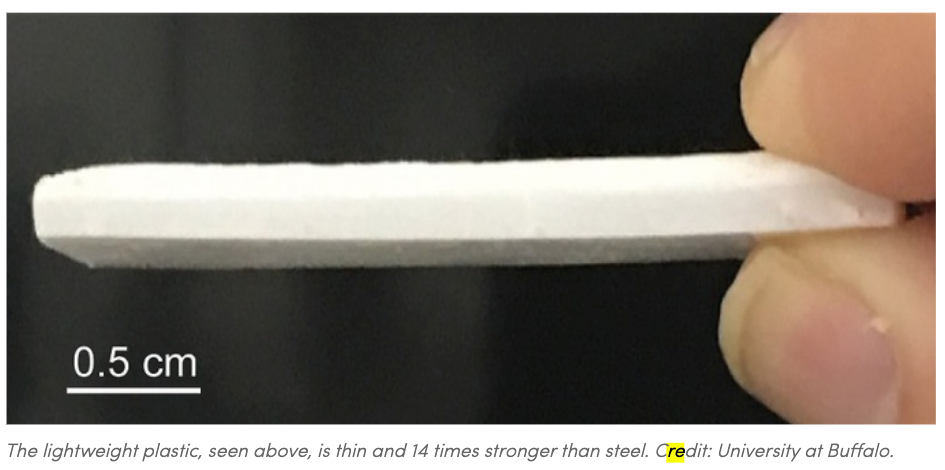“Stiff, Strong, And Tough” – Researchers Discover New Plastic That Could Revolutionize Body Armor
Researchers at the University of Buffalo (UB), funded by the Army Research Office (ARO), have developed a new plastic that could be used for advanced body armor, combat helmets, ballistic plates, and or even armor for vehicles.
The UB-led research team, fascinated by mollusk-grown gems, used inspiration from nature to create a lightweight plastic that is 14 times stronger and eight times lighter than steel and “ideal for absorbing the impact of bullets and other projectiles,” UB Now said.
The findings were published in a recent edition of the journal Applied Polymer Materials, published by the American Chemical Society (ACS).
“The material is stiff, strong and tough,” says lead author Shenqiang Ren, a professor in the Department of Mechanical and Aerospace Engineering and a member of UB’s RENEW Institute. “It could be applicable to vests, helmets and other types of body armor, as well as protective armor for ships, helicopters, and other vehicles.”
The new lightweight plastic is an advanced version of ultrahigh molecular weight polyethylene (UHMWPE).
Researchers said while developing the UHMWPE-based material; they examined “mother of pearl, which mollusks create by arranging a form of calcium carbonate into a structure that resembles interlocking bricks. Like, mother of pearl, the material has an extremely tough outer shell with a more flexible inner backing that’s capable of deforming and absorbing projectiles.”
Evan Runnerstrom, the ARO program manager, said UB’s new plastic might “lead to new generations of lightweight armor that provide both protection and mobility for soldiers.”
Runnerstrom said the UHMWPE-based material is easier to mold into intricate shapes that would make it more affordable to create protection for soldiers, vehicles, and other Army assets.
The new plastic is so advanced that it could replace Kevlar, a heat-resistant and durable synthetic fiber, used in the production of ballistic plates.
The ability for the new plastic to rapidly dissipate heat further helps it absorb the energy from a bullet and or shrapnel.
The team even blended the UHMWPE-based material with silica nanoparticles, which created an even strong armor.
“This work demonstrates that the right materials design approaches have the potential to make big impacts for Army technologies,” Runnerstrom said.
The next step for researchers would be creating ballistic plates of the new material for live-fire testing.
Tyler Durden
Fri, 09/20/2019 – 22:45
via ZeroHedge News https://ift.tt/2ACiXlb Tyler Durden
